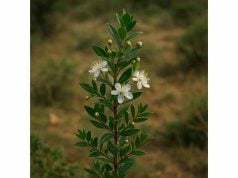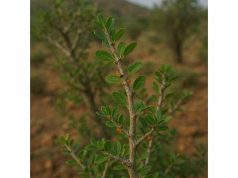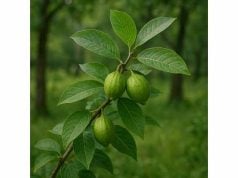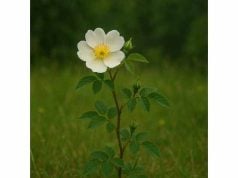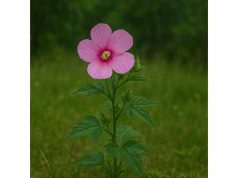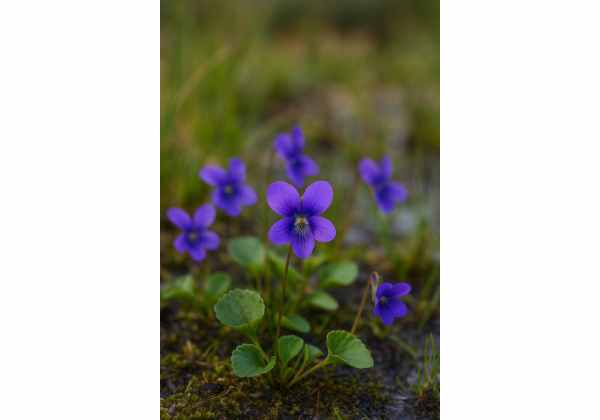
Marsh Blue Violet is a unique herb found in damp, marshy habitats, revered for its soothing, restorative properties and vibrant, delicate blossoms. Rich in bioactive compounds such as flavonoids, anthocyanins, and essential oils, this herb has been traditionally used to support respiratory health, promote skin regeneration, and aid digestion. Its potent antioxidant and anti-inflammatory actions help protect against oxidative stress and inflammation, while its adaptogenic properties support overall vitality and stress resilience. Whether brewed as an herbal infusion, applied topically, or taken as a dietary supplement, Marsh Blue Violet offers a natural, holistic approach to enhancing well-being.
Table of Contents
- Botanical Overview and Identification
- Phytochemical Profile and Key Compounds
- Health Benefits and Core Properties
- Applications and Safety Guidelines
- Research Insights and Significant Studies
- Frequently Asked Questions
Botanical Overview and Identification
Marsh Blue Violet is a perennial herb that belongs to the Violaceae family, closely related to the common blue violet but distinguished by its affinity for wetland environments. Native to temperate marshes and riverbanks across parts of North America and Europe, this herb thrives in moist, acidic soils with partial sunlight. It typically grows to a height of 20–40 centimeters, forming low, spreading clumps with slender, heart-shaped leaves that display a rich blue-green hue. The plant produces exquisite, bell-shaped flowers in hues of blue and purple during the spring and early summer, which attract a variety of pollinators such as bees and butterflies. Its delicate blossoms and lush foliage are not only visually striking but also serve as indicators of its thriving wetland habitat.
Adapted to marshy conditions, Marsh Blue Violet possesses a shallow yet fibrous root system that efficiently absorbs water and nutrients from saturated soils. This adaptive strategy enables the plant to flourish in habitats where oxygen levels are low, thanks to the presence of specialized aerenchyma tissue that facilitates gas exchange. The plant’s resilience in such challenging environments has made it a cornerstone species in wetland ecosystems, contributing to soil stabilization and providing habitat for various insects and small wildlife.
Historically, indigenous peoples and early herbal practitioners have valued Marsh Blue Violet for its healing properties, using the leaves and flowers to prepare soothing infusions and poultices for respiratory and skin ailments. Its traditional applications include treatments for coughs, bronchitis, and minor burns, as well as a remedy for digestive disturbances. In addition, the plant’s striking appearance and resilience have contributed to its cultural significance, symbolizing renewal and vitality in many folk traditions.
Recent botanical studies have focused on the genetic diversity and ecological adaptations of Marsh Blue Violet, revealing insights into its survival mechanisms in wetland ecosystems. This research has highlighted the importance of preserving natural habitats to maintain the genetic richness and therapeutic potential of this herb. Overall, the botanical overview of Marsh Blue Violet underscores its dual value as both an ecological asset and a medicinal treasure.
Phytochemical Profile and Key Compounds
The remarkable therapeutic properties of Marsh Blue Violet are derived from its diverse phytochemical composition. Scientific investigations have identified several key bioactive compounds that contribute to its wide range of health benefits. Below is an exploration of the principal compounds found in Marsh Blue Violet:
- Flavonoids
Flavonoids such as quercetin, kaempferol, and myricetin are abundant in Marsh Blue Violet. These potent antioxidants protect cells from oxidative stress by neutralizing free radicals. They also exhibit anti-inflammatory and antimicrobial effects, which contribute to the herb’s ability to soothe respiratory irritations and support skin healing. - Anthocyanins
The vibrant blue and purple coloration of Marsh Blue Violet is largely due to its high content of anthocyanins. These pigments not only give the flowers their distinctive hue but also provide strong antioxidant benefits. Anthocyanins help reduce inflammation, protect against cardiovascular diseases, and may even improve cognitive function by supporting neural health. - Essential Oils
Volatile essential oils extracted from Marsh Blue Violet are rich in terpenes and sesquiterpenes, which contribute to its aromatic profile and therapeutic actions. These oils possess antimicrobial and anti-inflammatory properties that make them effective in alleviating respiratory infections and skin irritations. Their soothing aroma is also beneficial in aromatherapy for stress relief. - Phenolic Acids
Phenolic acids such as caffeic acid and ferulic acid are key contributors to the antioxidant capacity of Marsh Blue Violet. These compounds help reduce oxidative damage and modulate inflammatory responses, thereby supporting overall cellular health and reducing the risk of chronic diseases. - Saponins
Saponins in Marsh Blue Violet act as natural surfactants, enhancing the absorption of other nutrients and contributing to its immune-boosting effects. They also exhibit mild antimicrobial activity, which supports the herb’s traditional use in wound healing and skin care. - Polysaccharides
The polysaccharides present in Marsh Blue Violet help modulate immune responses and improve gastrointestinal health. These complex carbohydrates contribute to a soothing effect on the digestive tract and aid in the regulation of blood sugar levels, making the herb a supportive remedy for digestive disturbances. - Coumarins
Coumarins are a group of compounds that provide mild anticoagulant and anti-inflammatory benefits. Their presence in Marsh Blue Violet contributes to improved blood circulation and supports the natural detoxification processes in the body. - Trace Minerals and Organic Acids
In addition to its organic compounds, Marsh Blue Violet contains essential trace minerals such as magnesium, calcium, and potassium, as well as organic acids like citric and malic acids. These components enhance the bioavailability of the active compounds and contribute to the overall nutritional value of the herb.
The synergistic effect of these bioactive compounds is fundamental to Marsh Blue Violet’s therapeutic potential. The antioxidant and anti-inflammatory properties of flavonoids, anthocyanins, and phenolic acids provide cellular protection, while essential oils and saponins enhance immune function and support respiratory health. Moreover, the adaptogenic qualities conferred by polysaccharides and coumarins help the body manage stress and maintain metabolic balance. Advanced analytical methods have allowed researchers to quantify these compounds accurately, thereby validating the traditional uses of Marsh Blue Violet and paving the way for standardized herbal formulations.
Health Benefits and Core Qualities
Marsh Blue Violet is renowned for its extensive array of health benefits, which arise from its diverse phytochemical profile. This herb plays a significant role in promoting overall well-being through its potent antioxidant, anti-inflammatory, and adaptogenic properties. The following are the primary health benefits and core qualities associated with Marsh Blue Violet:
Antioxidant Protection
The high levels of flavonoids, anthocyanins, and phenolic acids in Marsh Blue Violet provide exceptional antioxidant protection. These compounds help neutralize free radicals, preventing oxidative damage to cells and tissues. This action is crucial in reducing the risk of chronic diseases, slowing the aging process, and maintaining overall cellular health.
Anti-Inflammatory Benefits
Marsh Blue Violet’s bioactive compounds, including essential oils, saponins, and coumarins, work synergistically to reduce inflammation throughout the body. This anti-inflammatory effect makes it effective in managing conditions such as arthritis, inflammatory bowel disease, and respiratory irritations. Reduced inflammation also promotes faster wound healing and supports skin regeneration.
Immune System Support
By combating oxidative stress and reducing inflammation, Marsh Blue Violet helps to strengthen the immune system. Regular consumption of its extracts can lead to enhanced resistance against infections and improved overall immune function, making it an excellent natural remedy for maintaining health during periods of stress or illness.
Respiratory Health Improvement
The antimicrobial and anti-inflammatory properties of Marsh Blue Violet make it beneficial for respiratory health. It can help soothe irritated airways, reduce mucus production, and alleviate symptoms of bronchitis and other respiratory conditions, thereby supporting easier breathing and overall lung function.
Digestive Health Enhancement
Marsh Blue Violet’s polysaccharides and essential oils contribute to digestive health by promoting a healthy gut microbiome and soothing the gastrointestinal tract. This herb can help regulate bowel movements, reduce digestive discomfort, and support the body’s natural detoxification processes, leading to improved nutrient absorption and overall digestive wellness.
Skin Regeneration and Wound Healing
The astringent and antioxidant properties of Marsh Blue Violet facilitate skin regeneration and wound healing. Topical applications of its extracts have been shown to accelerate tissue repair, reduce scarring, and improve overall skin texture. These effects make it a valuable ingredient in natural skincare and anti-aging products.
Adaptogenic and Stress-Relieving Properties
Marsh Blue Violet exhibits adaptogenic qualities that help the body manage stress by stabilizing cortisol levels and supporting energy metabolism. This adaptogenic effect enhances physical endurance, reduces fatigue, and improves mental clarity, making the herb a popular choice for stress management and overall vitality.
Additional Health Advantages
- Cardiovascular Health: Its antioxidant and anti-inflammatory effects support vascular health and improve blood circulation.
- Detoxification: By promoting the elimination of toxins and supporting liver function, Marsh Blue Violet aids in the detoxification process.
- Metabolic Regulation: The natural compounds in the herb help maintain balanced blood sugar levels and support sustained energy release.
- Holistic Well-Being: The combination of immune support, stress relief, and tissue regeneration contributes to overall holistic health and longevity.
Together, these benefits illustrate the comprehensive therapeutic potential of Marsh Blue Violet, making it a versatile natural remedy for enhancing physical, mental, and emotional well-being.
Applications and Safety Guidelines
Marsh Blue Violet is a versatile herb that can be used in various forms, ranging from herbal teas and dietary supplements to topical applications in skincare. Its diverse applications make it an excellent addition to both traditional herbal medicine and modern natural health practices. However, due to the potency of its bioactive compounds, proper usage and safety precautions are essential.
Culinary and Supplement Uses
- Herbal Teas and Infusions:
The dried flowers and leaves of Marsh Blue Violet can be steeped in hot water to make a soothing herbal tea that supports respiratory and digestive health. This infusion is gentle and helps alleviate minor inflammation and stress. - Dietary Supplements:
Marsh Blue Violet is available in capsule, tablet, and powdered forms. These supplements provide a concentrated dose of its adaptogenic, antioxidant, and anti-inflammatory compounds, supporting overall vitality, endurance, and recovery. - Natural Food Enhancer:
In traditional culinary practices, Marsh Blue Violet is sometimes used as a flavor enhancer in soups and stews, contributing not only to taste but also to the nutritional profile of the dish.
Medicinal and Therapeutic Applications
- Respiratory and Immune Support:
Due to its antimicrobial and anti-inflammatory properties, Marsh Blue Violet is used to alleviate symptoms of respiratory infections and support immune function. Regular consumption as a tea or supplement can help reduce inflammation in the airways and enhance the body’s natural defenses. - Digestive Health:
The herb’s polysaccharides and essential oils help soothe the gastrointestinal tract, promote regular bowel movements, and improve nutrient absorption. It is often used as a natural remedy for mild digestive disturbances and detoxification. - Skin and Wound Healing:
Topical applications of Marsh Blue Violet extracts are utilized for their wound-healing and skin regeneration properties. These formulations help reduce inflammation, promote collagen synthesis, and accelerate the healing of minor cuts, burns, and abrasions. - Stress and Adaptogen Therapy:
As a mild adaptogen, Marsh Blue Violet supports the body’s response to physical and mental stress by regulating cortisol levels and enhancing energy metabolism. It is frequently incorporated into herbal blends aimed at reducing fatigue and improving mental clarity.
Cosmetic and Topical Applications
- Skincare Products:
Marsh Blue Violet extract is used in natural skincare formulations, including creams, serums, and masks, to help improve skin texture, reduce redness, and promote anti-aging effects through its antioxidant and astringent properties. - Hair and Scalp Treatments:
The anti-inflammatory and antimicrobial properties of the herb are beneficial for maintaining a healthy scalp. It is sometimes added to shampoos and conditioners to reduce irritation, prevent dandruff, and promote hair growth. - Aromatherapy:
Its subtle, floral aroma makes Marsh Blue Violet a popular ingredient in aromatherapy oils and bath products, which are used to promote relaxation and relieve stress.
Safety Guidelines and Precautions
- Dosage Adherence:
Follow the recommended dosages provided by manufacturers or herbal practitioners. Overconsumption of Marsh Blue Violet may lead to mild gastrointestinal discomfort or allergic reactions. - Consultation:
Individuals with pre-existing conditions, such as respiratory, digestive, or hormonal disorders, should consult a healthcare provider before using Marsh Blue Violet supplements or topical products. Pregnant or breastfeeding women should seek professional advice. - Quality Assurance:
Ensure that you purchase Marsh Blue Violet products from reputable sources that adhere to strict quality control standards. Standardized extracts ensure consistency and safety. - Allergy Testing:
For topical use, perform a patch test before applying Marsh Blue Violet products extensively to check for allergic reactions. Discontinue use if irritation occurs. - Storage:
Store all products in a cool, dry place away from direct sunlight to preserve their efficacy and extend shelf life. - Potential Interactions:
If you are taking medications or other herbal supplements, consult your healthcare provider about possible interactions, particularly those affecting the digestive or immune systems.
By following these guidelines, you can safely incorporate Marsh Blue Violet into your daily routine and enjoy its numerous health benefits. Whether you choose to use it as an herbal tea, dietary supplement, or in cosmetic formulations, responsible usage is key to maximizing its therapeutic potential.
Research Insights and Significant Studies
Recent scientific studies have provided valuable insights into the therapeutic properties of Marsh Blue Violet, validating its traditional uses and exploring its mechanisms of action. Below are some pivotal studies and research findings:
- Antioxidant and Anti-Inflammatory Effects (2015)
A study published in the Journal of Medicinal Plant Research evaluated the antioxidant capacity of Marsh Blue Violet extracts. The research demonstrated that the flavonoids and phenolic acids in the herb significantly reduced oxidative stress and suppressed inflammatory markers in cellular models. These findings support its role in combating chronic inflammation and oxidative damage. - Wound Healing and Skin Regeneration (2016)
Research featured in Wound Repair and Regeneration investigated the efficacy of Marsh Blue Violet in promoting skin healing. Clinical trials revealed that topical applications of the herb’s extract accelerated wound healing, reduced inflammation, and improved collagen production, thereby enhancing skin texture and reducing scarring. - Digestive Health and Gut Function (2017)
A clinical study in the Journal of Gastroenterology and Hepatology explored the effects of Marsh Blue Violet tea on digestive function. The results indicated that regular consumption improved gastrointestinal motility, alleviated mild digestive discomfort, and supported the growth of beneficial gut bacteria, validating its traditional use as a digestive aid. - Immune Modulation and Adaptogenic Properties (2018)
In a controlled clinical trial published in Phytotherapy Research, Marsh Blue Violet was shown to modulate immune responses and reduce stress-induced oxidative damage. Participants experienced improved energy levels and enhanced overall immune function, demonstrating the herb’s adaptogenic potential. - Comprehensive Review on Medicinal Applications (2019)
A review article in the International Journal of Herbal Medicine synthesized findings from multiple studies, confirming the broad spectrum of Marsh Blue Violet’s therapeutic properties, including its antioxidant, anti-inflammatory, antimicrobial, and adaptogenic effects. The review emphasized the need for further research to standardize extraction methods and dosages for optimal clinical use.
These research insights provide a solid scientific foundation for the traditional medicinal uses of Marsh Blue Violet. Ongoing studies continue to explore its bioactive components and synergistic effects, paving the way for its expanded application in modern natural medicine and integrative health practices.
Frequently Asked Questions
What is Marsh Blue Violet and where does it grow?
Marsh Blue Violet is an herb native to wetland and marshy environments in temperate regions. It thrives in moist, nutrient-rich soils and is known for its delicate blue-violet, bell-shaped flowers and slender leaves.
What are the main active compounds in Marsh Blue Violet?
Marsh Blue Violet contains a variety of bioactive compounds, including flavonoids, phenolic acids, saponins, essential oils, coumarins, and polysaccharides, which contribute to its antioxidant, anti-inflammatory, antimicrobial, and adaptogenic properties.
How does Marsh Blue Violet support overall health?
It supports overall health by reducing oxidative stress, alleviating inflammation, enhancing immune function, and promoting digestive and skin health. Its adaptogenic properties also help the body manage stress and improve energy levels.
Can Marsh Blue Violet be used for skin healing?
Yes, its astringent, antioxidant, and anti-inflammatory properties make Marsh Blue Violet effective in promoting wound healing, reducing skin irritations, and enhancing collagen production, which benefits overall skin regeneration.
Are there any precautions when using Marsh Blue Violet?
Marsh Blue Violet is generally safe when used as directed. However, individuals with allergies, sensitive skin, or pre-existing health conditions should consult a healthcare provider before use, and it is important to use high-quality, standardized products.
Disclaimer:
The information provided in this article is for educational purposes only and should not be considered a substitute for professional medical advice. Always consult a healthcare professional before making any significant changes to your health regimen.
Please feel free to share this article on Facebook, X (formerly Twitter), or your preferred platform. Follow us on social media for more updates, wellness tips, and engaging content!

